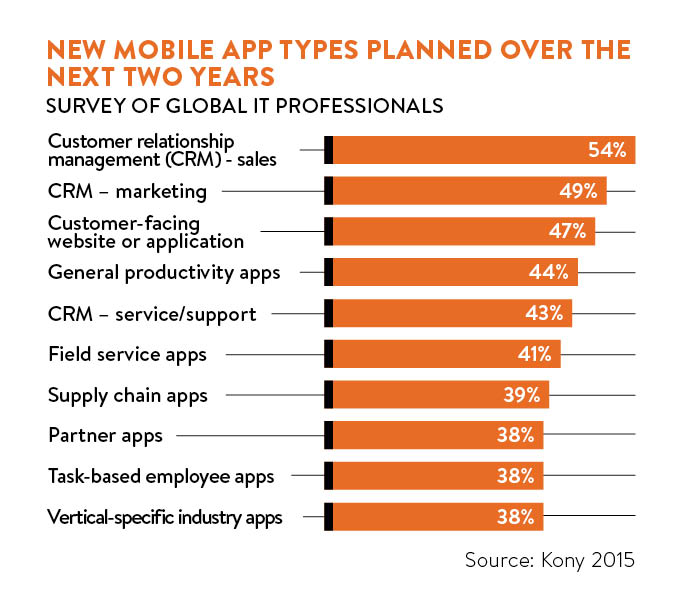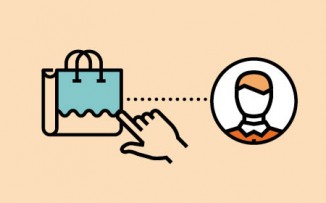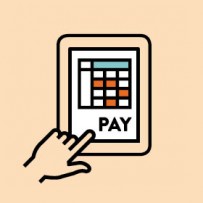In the past, mobility in business focused mainly on general office productivity apps. At best, that offers marginal gains; at worst, it can amplify inefficiencies.
Being copied in on pointless e-mails via your mobile phone doesn’t make you more productive, says Michael Hobbs, UK mobility lead at Accenture UK and Ireland, it just gives you more annoying e-mails to wade through on the road.
“They tend to magnify the ‘reply all’ phenomenon unless they’re used for specific purposes,” he says of mobile enterprise apps.
But as these apps evolve, they are digitising paper-based work, enabling staff to get more important things done wherever they are. For example, retail staff are visiting farmers to inspect the quality of fresh food and streamline their supply chains. Property management companies are dispatching janitors to fix problems in record time, document the work with photos and then notify tenants via text messages.
Exploring functions
So how can you dream up a mobile app that makes sense for your business? Juan Pablo Luchetti, consultancy director at enterprise mobile app consultancy Mubaloo, works with clients to determine their business objectives, such as processing invoices more quickly or reducing service times.
“We look at what roles impact that and which of those roles are highly mobile,” he says. The company will consult with key personnel, and find out how enterprise mobile apps may be able to transform what they do and help them meet their business goals.
What kinds of things might these apps do? They sit along a continuum of complexity, according to Chris Marsh, a principal analyst in enterprise mobility at technology analyst company 451 Research. Simpler enterprise mobile apps cover functions common to many companies, such as inventory management or customer relationship management. These can be purchased off the shelf, will have some configuration capability and will typically be linked to some kind of back-end database provided by the vendor.
An enterprise mobile app that knows where you are and perhaps what you’re doing can send you tasks appropriate for your context
As apps become more sophisticated, they may exchange more detailed information with multiple back-end applications, needing more custom development, says Mr Marsh.
“You’re giving tools for businesses to create their own user interface at the front and giving them more flexibility to decide what they pull from those back-end systems into their apps,” he says. “It happens on a much more customised basis.”
If you have these ambitions, be sure your IT department can support them, warns Caroline Van Den Bergh, vice president, Europe Middle East and Africa, at DMI, which builds mobile software systems for enterprise customers.
One of the dangers is having older, back-end software that isn’t ready to connect with the kind of mobile apps customers want to build for users. She says: “The limitation is often the IT structure.
“We think that the promise of mobile really is to make the business process much more contextual through things like location and presence awareness,” says Mr Marsh. An enterprise mobile app that knows where you are and perhaps what you’re doing can send you tasks appropriate for your context, for example.
The impact of wearables
Devices and apps will reach new heights of sophistication as wearables enter the scene, according to Accenture’s Mr Hobbs. “Wearable devices have a clear potential to disrupt every industry, including oil and gas, healthcare, media, retail, public services, warehouse, agriculture, construction and automotive,” he says.
He splits wearables into two categories: generalist devices, such as smartwatches that are currently popular in the consumer market; and specialist devices, such as glasses with heads-up displays, including the enterprise version of Google’s Project Glass.
“The biggest case for those is specific and it stacks up where it assists someone in performing a business process more efficiently,” he says. Examples include using the glasses to help airline engineers to assemble components more efficiently.
The company is also working with vendors to create scaled-down wearable devices with limited functions to support specific business processes. “We can get the wristwatch down to sub-$100 and give productivity benefits to the cleaning and maintenance of hotels,” he says.
A cleaner could wear a low-functionality band that knew their location and relayed simple messages, like “Drink spilled in lobby – please fix”. “It’s more convenient than somebody carrying around a smartphone,” says Mr Hobbs.
However, companies face a long journey to build enterprise mobile apps even half that sophisticated. The first step along the road is getting business managers on board and ensuring the money is there to get enterprise app projects beyond the pilot phase, says Ms Van Den Burgh. This means finding a way to measure the success of a mobile project early on.
“We try to create clarity that can be taken to a senior manager. We show metrics that can be used to measure the project going forward,” she says. The metrics depend on the app concerned. It could involve measuring the number of visits a field service engineer makes in a day or gauging how long a product takes to move from the warehouse to the retail shelf.
So, what are your critical tools on that journey? They are a decent roadmap, the right technical infrastructure and a sense everyone in the organisation is walking in lockstep.
FIVE FUNCTIONS
01 Human resources
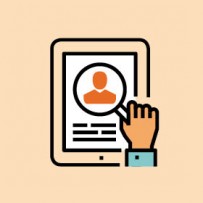 A company relying on shift-based staff might find it difficult to track attendance and find absentee cover quickly. An enterprise app could enable workers to report in sick using their smartphone. It could then contact other workers automatically, asking them to cover the shift and allowing them to accept electronically, automatically adjusting their payroll.
A company relying on shift-based staff might find it difficult to track attendance and find absentee cover quickly. An enterprise app could enable workers to report in sick using their smartphone. It could then contact other workers automatically, asking them to cover the shift and allowing them to accept electronically, automatically adjusting their payroll.
02 Sales
Field sales staff can use mobile apps to reference up-to-date product data and create proposals on the fly. They can then present the custom proposal to the customer to be signed and action the order instantly before they return to the office, speeding up the delivery process.
03 Marketing
 A mobile app could analyse notes in real time during a marketing meeting, using keywords to work out what concepts are being discussed. It could immediately search the company’s analytics systems to return appropriate data in visual form, giving the marketing department additional intelligence.
A mobile app could analyse notes in real time during a marketing meeting, using keywords to work out what concepts are being discussed. It could immediately search the company’s analytics systems to return appropriate data in visual form, giving the marketing department additional intelligence.
04 Finance
Sending invoices is a critical business function, but relies on billing data from employees. Field service engineers could use their mobile data to log information about completed jobs. The finance department could then use that data to generate invoices and send them before the engineer has even returned to the office.
05 Warehouse
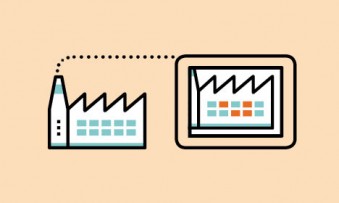 Large warehouses are ideal departments for task scheduling. Smartphones or wearables could track workers’ whereabouts, sending them to different aisles and giving them different jobs. Bonus points include “smart” shelves using connected sensors to tell the enterprise app which aisles need stocking next.
Large warehouses are ideal departments for task scheduling. Smartphones or wearables could track workers’ whereabouts, sending them to different aisles and giving them different jobs. Bonus points include “smart” shelves using connected sensors to tell the enterprise app which aisles need stocking next.
